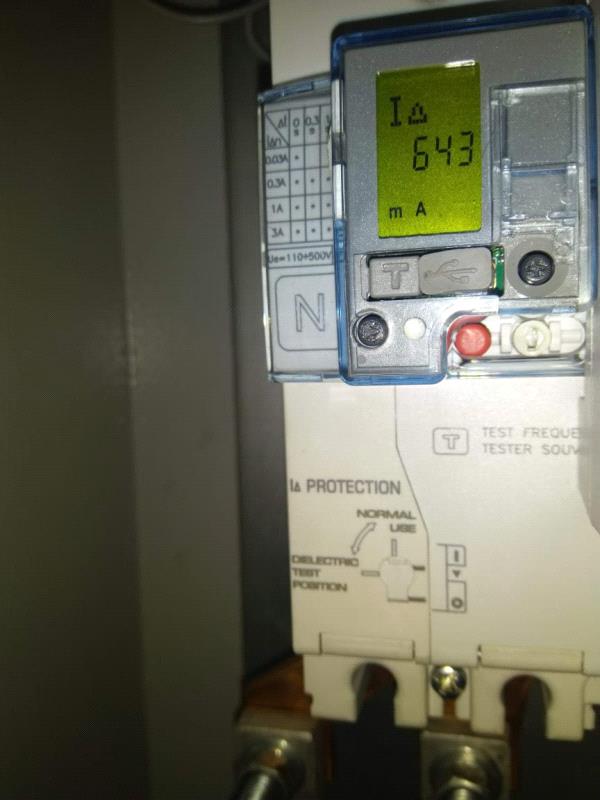Fault Identification using Earth Leakage Display
Admin | 30 Jun 2021Total Views : 3735
A new state of the art Ophthalmology Hospital was successfully commissioned. As usual the Electrical Contractor was busy with “As build Drawing” and suddenly the main MCCB Tripped.
Investigation was initiated for the cause of trip by scanning the main incomer MCCB for any fault records. It indicated a leakage fault!!! We had set the max earth leakage trip to 3A and to our surprise, the MCCB recorded 2.5A … photo of the same attached. How did we miss this in our tests…?
We started with the fault diagnosis by switching OFF all the outgoing MCBs. The Main MCCB was switched ON again and … it sustained…we started switching ON one by one all the Outgoing feeders and simultaneously observing the leakage current on the MCCB. There wasn’t any appreciable rise...till than we switched ON the Emergency feeder supply to the old building. The MCCB Tripped again indicating the same fault…GOOD we located the fault…this was isolated and the supply was safely restored to the new building.
Why the leakage current did reached to such a magnitude…was the next question. During the normal shutdown, we undertook the exercise to address the leakage current issue. We had a Main Panel for the old building as well. However, the Leakage current detection device did not trip and was something ODD to us.
So, we restored the old building supply from the New building panel by initially switching OFF all the old building load. To our utter surprise, the leakage current indicated 690 to 640mA photos attached … how was that possible…? We asked the electrical contractor regarding this … he said he has laid flexible copper cables through a UG pipe. This was his observation. Secondly, we traced the route and found that the UG pipe was clogged with water and mud. The hospital engineer told it had rained heavily flooding the lower ground floor and that might be the cause.
Further, we increased the old building load by switching ON the AC units and found that the leakage current increased substantially up to 2.0A and we stopped.
To summarize – Old equipment’s are aging and so client has to take a call on the same. Secondly, the cable had to be armored and routed so that it didn’t end up in the water clogged area.